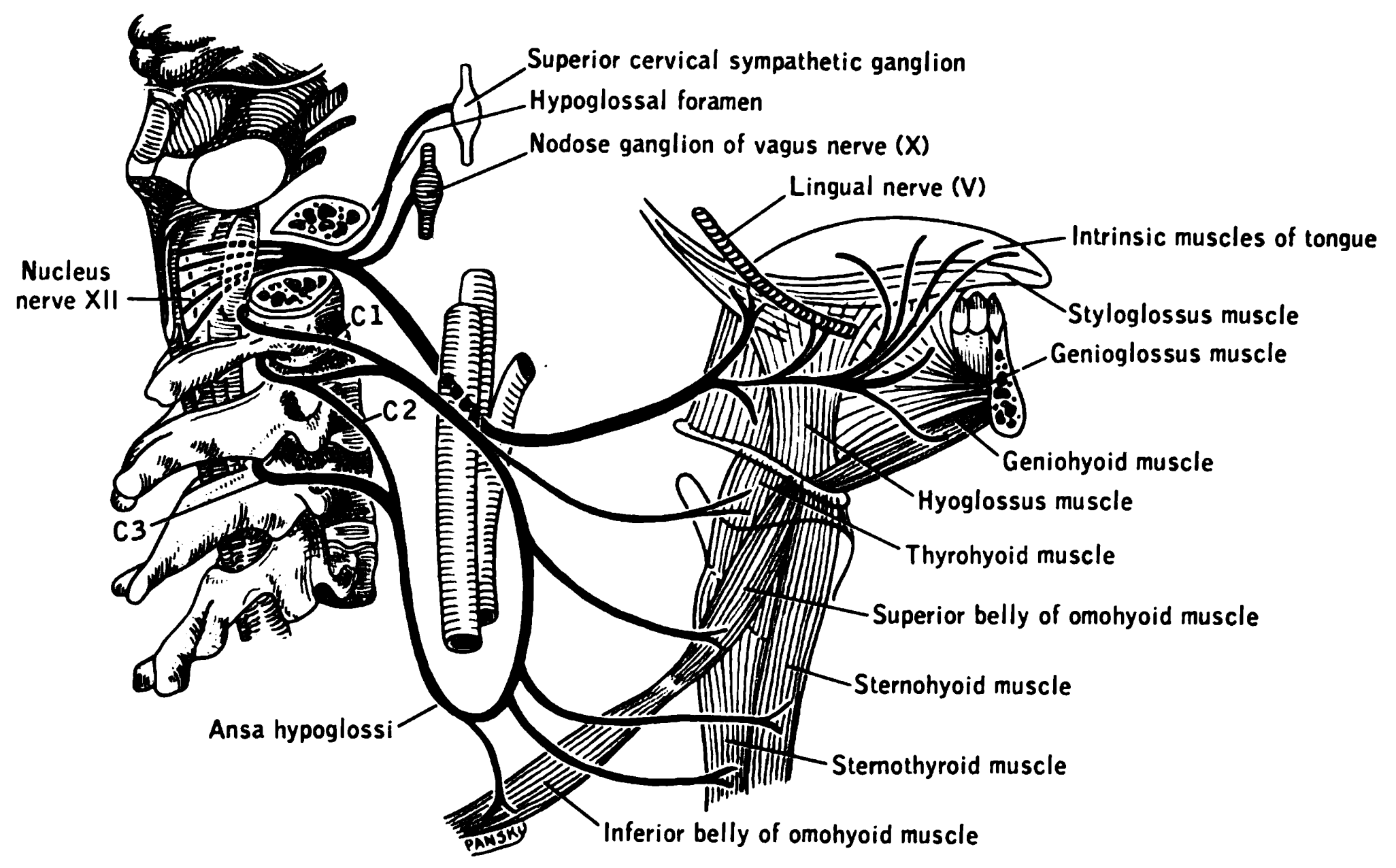|
Lesser Triangle
It is a triangle contained within the Submandibular triangle. Its boundaries are the Hypoglossal Nerve, and the Anterior and Posterior belly of the Digastric muscle. This triangle was named after a German German(s) may refer to: * Germany (of or related to) **Germania (historical use) * Germans, citizens of Germany, people of German ancestry, or native speakers of the German language ** For citizens of Germany, see also German nationality law **Ger ... surgeon named Ladislaus Leon Lesser, who lived from 1846 to 1925 References Anatomy {{musculoskeletal-stub ... [...More Info...] [...Related Items...] OR: [Wikipedia] [Google] [Baidu] |
Submandibular Triangle
The submandibular triangle (or submaxillary or digastric triangle) corresponds to the region of the neck immediately beneath the body of the mandible. Boundaries and coverings It is bounded: * ''above'', by the lower border of the body of the mandible, and a line drawn from its angle to the mastoid process; * ''below'', by the posterior belly of the Digastricus; in front, by the anterior belly of the Digastricus. It is covered by the integument, superficial fascia, Platysma, and deep fascia, ramifying in which are branches of the facial nerve and ascending filaments of the cutaneous cervical nerve. Its floor is formed by the Mylohyoideus anteriorly, and by the hyoglossus posteriorly. Triangles * Beclard Triangle * Lesser Triangle * Pirogoff Triangle Divisions It is divided into an anterior and a posterior part by the stylomandibular ligament. Anterior part The anterior part contains the submandibular gland, superficial to which is the anterior facial vein, while imbedde ... [...More Info...] [...Related Items...] OR: [Wikipedia] [Google] [Baidu] |
Hypoglossal Nerve
The hypoglossal nerve, also known as the twelfth cranial nerve, cranial nerve XII, or simply CN XII, is a cranial nerve that innervates all the extrinsic and intrinsic muscles of the tongue except for the palatoglossus, which is innervated by the vagus nerve. CN XII is a nerve with a solely motor function. The nerve arises from the hypoglossal nucleus in the medulla as a number of small rootlets, passes through the hypoglossal canal and down through the neck, and eventually passes up again over the tongue muscles it supplies into the tongue. The nerve is involved in controlling tongue movements required for speech and swallowing, including sticking out the tongue and moving it from side to side. Damage to the nerve or the neural pathways which control it can affect the ability of the tongue to move and its appearance, with the most common sources of damage being injury from trauma or surgery, and motor neuron disease. The first recorded description of the nerve is by Her ... [...More Info...] [...Related Items...] OR: [Wikipedia] [Google] [Baidu] |
Digastric Muscle
The digastric muscle (also digastricus) (named ''digastric'' as it has two 'bellies') is a small muscle located under the jaw. The term "digastric muscle" refers to this specific muscle. However, other muscles that have two separate muscle bellies include the suspensory muscle of duodenum, omohyoid, occipitofrontalis. It lies below the body of the mandible, and extends, in a curved form, from the mastoid notch to the mandibular symphysis. It belongs to the suprahyoid muscles group. A broad aponeurotic layer is given off from the tendon of the digastric muscle on either side, to be attached to the body and greater cornu of the hyoid bone; this is termed the suprahyoid aponeurosis. Structure The digastricus (digastric muscle) consists of two muscular bellies united by an intermediate rounded tendon. The two bellies of the digastric muscle have different embryological origins, and are supplied by different cranial nerves. Each person has a right and left digastric muscle ... [...More Info...] [...Related Items...] OR: [Wikipedia] [Google] [Baidu] |
Germans
, native_name_lang = de , region1 = , pop1 = 72,650,269 , region2 = , pop2 = 534,000 , region3 = , pop3 = 157,000 3,322,405 , region4 = , pop4 = 21,000 3,000,000 , region5 = , pop5 = 125,000 982,226 , region6 = , pop6 = 900,000 , region7 = , pop7 = 142,000 840,000 , region8 = , pop8 = 9,000 500,000 , region9 = , pop9 = 357,000 , region10 = , pop10 = 310,000 , region11 = , pop11 = 36,000 250,000 , region12 = , pop12 = 25,000 200,000 , region13 = , pop13 = 233,000 , region14 = , pop14 = 211,000 , region15 = , pop15 = 203,000 , region16 = , pop16 = 201,000 , region17 = , pop17 = 101,000 148,00 ... [...More Info...] [...Related Items...] OR: [Wikipedia] [Google] [Baidu] |
Ladislaus Leon Lesser
Ladislaus ( or according to the case) is a masculine given name of Slavic origin. It may refer to: * Ladislaus of Hungary (other) * Ladislaus I (other) * Ladislaus II (other) * Ladislaus III (other) * Ladislaus IV (other) * Ladislaus the Posthumous or Ladislaus V of Hungary (1440–1457), also King of Bohemia * Ladislaus of Naples (1377–1414), King of Naples * Wenceslaus III of Bohemia (1289–1306), who took the name Ladislaus when he was crowned King of Hungary in 1301 * Ladislaus Bortkiewicz (1868–1931), Russian economist and statistician * Ladislaus Hunyadi (1431–1457), Hungarian nobleman * Ladislaus Jagiello (other) * Ladislaus Kán (other) * Ladislaus Kurpiel (1883–1930), Austrian footballer * Ladislaus Pyrker (1772–1847), Hungarian Cistercian abbot, archbishop and poet * Ladislaus Perera Ranasinghe (1913-1983), Sri Lankan Sinhala actor * Ladislaus Rátót (died 1328), Hungarian nobleman and landown ... [...More Info...] [...Related Items...] OR: [Wikipedia] [Google] [Baidu] |

